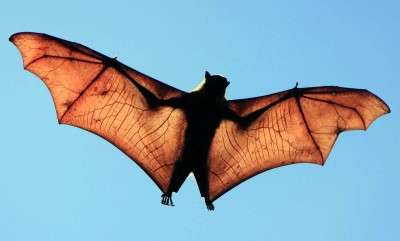Stopping a deadly virus in its tracks

An international team of scientists, led by Dr Greg Moseley and Professor David Jans from the Monash School of Biomedical Sciences, has identified a novel vaccine strategy against lyssaviruses that cause rabies in animals and humans. Each year, over 60,000 people worldwide die from rabies following lyssavirus infections.
There are 15 known species of lyssaviruses, including Australian bat lyssavirus and rabies virus, which are commonly transmitted by bats or dogs through bites or scratches. Infected animals and humans, if not treated rapidly with a series of injections of inactivated vaccines and expensive immunoglobulins, die in 100 per cent of cases. This is the highest fatality rate for any known infectious disease.
In a study published recently in the Journal of Infectious Diseases, scientists from Monash University; Institut Pasteur, Université Paris Diderot and CNRS, in France; and Gifu University, in Japan, have developed a mutated lyssavirus that cannot evade immune responses in the body, resulting in a weakened strain that is switched from a 100 per cent lethal pathogen to one that no longer causes disease in infected mice.
"The production of this new viral strain is a great first step towards making new live rabies vaccines in the future," said Dr Moseley, the team leader from the Monash Department of Biochemistry and Molecular Biology.
"Live vaccines can be grown easily in large quantities, and delivered as a single oral dose, unlike existing 'killed' rabies vaccines that must be injected several times over an extended period, limiting their application in resource-poor countries."
In the research study, the researchers identified the region in a lyssavirus protein that inhibits immune responses.
"By making only two specific changes to the approximately 12,000 base pair viral genome, we have rendered the virus non-pathogenic," said lead author and Monash University PhD student Linda Wiltzer.
"We now plan to develop a candidate vaccine based on our attenuated virus, and test its safety and efficacy in mice."
If this approach is successful, Dr Moseley believes that this novel vaccine strategy may have widespread application for domestic animals and possibly humans who are exposed to bats or dogs that harbour lyssaviruses.
Since embarking on this vaccine research, Monash University has filed an Australian provisional patent application to facilitate future clinical development.

















